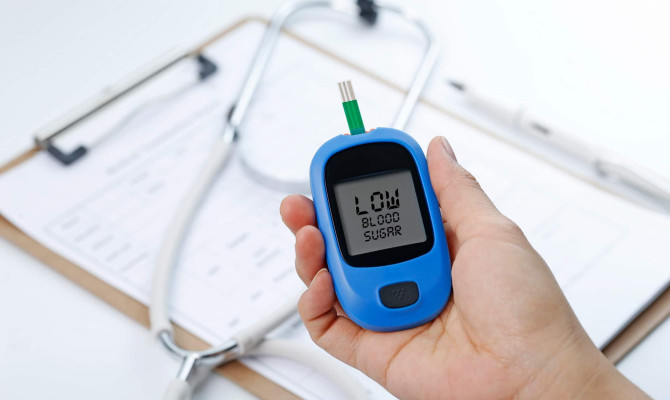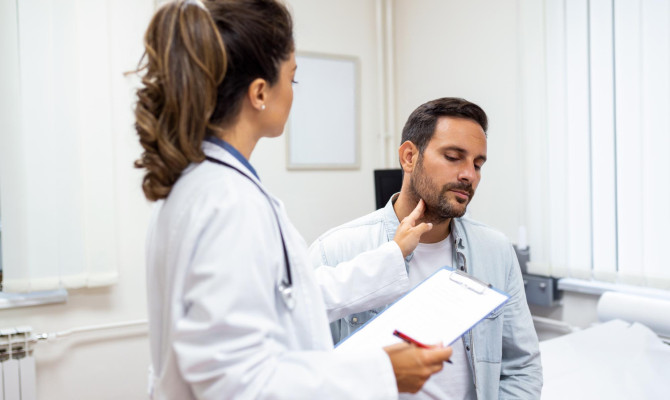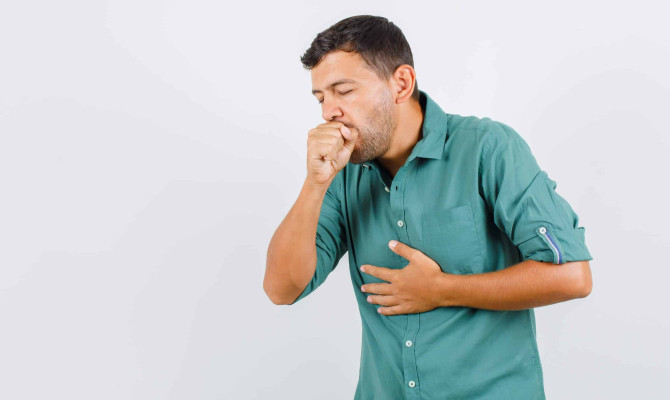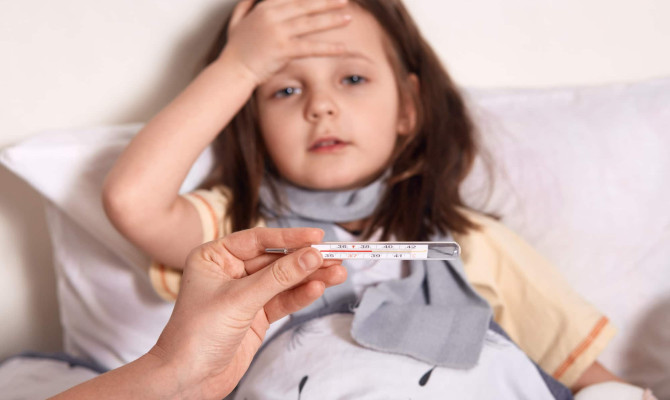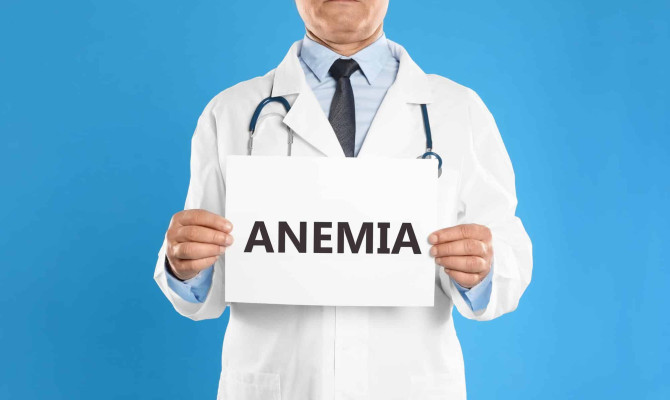Gynecomastia : Understanding the causes, symptoms and treatment

- Gynecomastia
- 17 Aug 2023
Overview
What is Gynecomastia?
Gynecomastia is a disorder where the glandular tissue in the breasts enlarges in boys or men, occasionally resulting in discomfort or sore nipples. It typically appears during childhood, adolescence, or middle to late life and is brought on by a hormonal imbalance. The breast growth caused by fat deposits found in overweight males must be separated from gynecomastia.
Gynecomastia manifests as a button-sized protrusion under the nipple. If you press on the area, you can feel anything there that resembles a breast lump. In the breast tissue, the lump may move freely and feel painful to the touch. One or both breasts may develop breast lumps and growth.
Although therapies are available for severe or persistent cases, the illness frequently goes away on its own. When gynecomastia is brought on by an underlying medical condition, treating that condition typically improves the gynecomastia as well. The most prevalent male breast condition is gynecomastia. Around the world, 50 to 65 percent of boys and men are affected.1Overview| Researched based study from Clevelandclinic.org ,2Overview| Researched based study from Hopkinsmedicine.org

Types
Types and grades of Gynecomastia
Gynecomastia has been classified as having three different types:
- Florid
- Fibrous
- Intermediate
The type is frequently correlated with how long the condition has existed.
Florid gynecomastia
- It is often discovered in the early stages of the ailment (4 months or less). Vascularity and ductal tissue are both increased.
Fibrous gynecomastia
- It is seen after a period of 12 months and is distinguished by increased stromal fibrosis and fewer ducts.
Intermediate gynecomastia
- Additionally, it is seen after a year, which is assumed to be a transition from florid to fibrous.
Stages of Gynecomastia
Gynecomastia is said to progress through four stages, which are as follows:
Grade I
- In this stage of gynecomastia, there is only a slight breast enlargement. No more skin growth occurs.
Grade II
- There is no additional skin development in grade II. However, men do have larger breasts and swollen nipples.
Grade III
- Males with gynecomastia at this stage have noticeably enlarged breasts and nipples as well as modest skin tissue growth.
Grade IV
- Marked breast growth with extra skin and a female breast look 3Types| Researched based study from Nlm.nih.gov
Causes
Causes of Gynecomastia
The Imbalance of hormones
- Gynecomastia is typically brought on by an imbalance of estrogen and androgen hormones. The hormone estrogen, which controls breast growth, is often only moderately produced by male bodies.
- Your breasts may grow if your body produces too much estrogen or if you have little testosterone (hypogonadism).
Other things that can cause gynecomastia are
- Thyroid issues because the hormones produced by that gland regulate sexual and growth
- Certain malignancies, such as tumors of the adrenal, pituitary or lungs
- Testicular injuries or conditions that affect the synthesis of testosterone
- Kidney failure (when they are unable to filter and purify your blood)
- Obesity, which could result in increased amounts of estrogen
- As a result of liver disease
- Drugs that are prohibited, including heroin, marijuana, and anabolic steroids
- Even though they still have maternal hormones in their systems, certain infant boys may experience transient gynecomastia.
Certain medications can cause gynecomastia, including:
Heart medications
- Sometimes, drugs like digoxin (Lanoxin) and calcium channel blockers might cause gynecomastia.
Medications for stomach emptying
- For instance, gynecomastia is a side effect of metoclopramide.
Medicines for ulcers
- Some over-the-counter ulcer medications, like cimetidine, can cause gynecomastia.
HIV drugs
- Highly active antiretroviral medication, which is used to treat HIV, can occasionally cause gynecomastia as a side effect.
Medications that reduce anxiety
- Sometimes, drugs like diazepam might lead to gynecomastia.4Causes| Researched based study from Nhs.uk ,5Causes| Researched based study from Mayoclinic.org
Symptoms
Symptoms of Gynecomastia
Adult men with gynecomastia typically report no symptoms. The following are possible symptoms and signs of the condition:
- Increase in the size of male breasts
- Often symmetrical in shape and maybe rubbery or hard to the touch
- Typically occurs on both sides although occasionally might be unilateral
- Despite the involvement of both sides, enlargement may be greater on one side
- Although there usually isn’t any intense pain, tenderness and sensitivity may be present
- Sensitivity in the nipples when touching against clothing 5Symptoms| Researched based study from Mayoclinic.org ,6Symptoms| Researched based study from Nlm.nih.gov
Diagnosis
How is Gynecomastia diagnosed?
Physical Examination
- A doctor will do a physical examination of the breasts and the overall body to look for any potential problem areas before making a decision about the presence of gynecomastia.
- It’s crucial to confirm that a man’s enlarged breasts are caused by excessive growth of glandular tissue—which has an apparent network of ducts—rather than excessive fat tissue. Pseudogynecomastia is the term for the condition in which the breasts of overweight boys and men expand due to increased fat levels rather than true breast tissue.
Tests
It is also possible to undertake blood tests to measure hormone levels. To further confirm the diagnosis, imaging procedures like a mammogram or ultrasound may occasionally be required.
Blood tests
- Your doctor examines the various hormone levels in your body by analysing the blood. Your doctor may be able to determine why the tissue enlarged by looking at your testosterone and oestrogen levels.
- Other hormones, such as hCG (human chorionic gonadotropin), LH (luteinizing hormone), and FSH (follicle stimulating hormone), may point to underlying medical conditions that could lead to gynecomastia.
Liver or kidney function tests:
- Gynecomastia can be emotionally upsetting, but it may also be a sign of something more serious. Gynecomastia has been related in studies to renal and liver problems. To identify underlying diseases, your doctor might request a liver and/or renal function test.
X-Rays (Mammogram):
- Gynecomastia is also diagnosed in men using mammography. The results of breast X-rays can identify any localized tissue lumps that would be difficult to detect by touch alone. Breast imaging can also reveal the presence of boils and abscesses that may have caused breast edema.6Diagnosis| Researched based study from Nlm.nih.gov
Testicular Ultrasounds
- Gynecomastia might be a chest issue, but your doctor might also ask for an X-ray of your testicles. Cancers and tumours could be ruled out using MRI scans, computerised tomography (CT) scans, and other tools.
Tissue biopsies
- The removal of breast tissue sample for the purpose of cancer analysis may be advised by your doctor. All of these methods can provide your doctor with a comprehensive picture of your health, including, frequently, the gynecomastia reason.
Prevention
Prevention of Gynecomastia
You can take measures to lessen your risk of developing gynecomastia. They consist of things like:
- Avoid using illegal or recreational substances including heroin, amphetamines, marijuana, anabolic steroids and androgens
- Talk to your doctor about your medication list. Ask if there are any alternatives if any of your drugs have been known to induce gynecomastia
- Avoid drinking alcohol or limit your consumption 4Prevention| Researched based study from Nhs.uk
Treatment
How Gynecomastia is treated?
There are two different types of therapy options for gynecomastia, depending on the underlying reason, which may include early puberty, specific illnesses and ailments (such as hyperthyroidism, cirrhosis, or liver disease, overweight or obesity, etc.), maternal transfer, and specific drugs.
Medical Treatment
Depending on the patient’s condition, the doctor may recommend medicine or hormone therapy to treat gynecomastia, which includes
If hormonal imbalance is the primary cause of the gynecomastia, a hormone therapy that increases hormone production will be given.
- Testosterone replacement therapy
- Estrogen receptor modulators like clomiphene and tamoxifen
- Your doctor might stop the medicine or replace it with an alternative if the gynecomastia is being brought on by it.
Surgical Treatment
Depending on the amount of fat and glandular breast tissue present, there are two different forms of gynecomastia surgery or male breast reduction surgery performed:
- Liposuction (removal of male breast fat tissue)
- Mastectomy (removal of male glandular breast tissue)
Occasionally, both surgical treatments will be carried out, depending on the severity (gynecomastia stages) of the problem. 4Treatment| Researched based study from Nhs.uk 5Treatment| Researched based study from Mayoclinic.org ,7Treatment| Researched based study from Healthdirect.gov
Takeaway
Takeaway tips
- In men or boys, gynecomastia refers to an overdevelopment or expansion of the breast tissue
- Breast size increases. Commonly, growth is uneven
- Frequently, the cause is alterations in the amounts of the female hormone estrogen and the male hormone testosterone. It could also be caused by other things
- When a preteen or adolescent guy is going through puberty is when the majority of incidents occur. However, older men and newborn babies might also experience it
- It frequently disappears on its own. Occasionally, hormone therapy is required. The disease could also be treated through surgery
Any feedback on this article?
 This Articles content was accurate
This Articles content was accurate Very Informative Article
Very Informative Article I have a question or a comment
I have a question or a comment
 This article contains inaccurate content
This article contains inaccurate content This article was not helpful
This article was not helpful I have a question or a comment
I have a question or a comment
We appreciate your helpful feedback!
Checkout our social pages
References
-
Cleveland Clinic
Enlarged Male Breast Tissue (Gynecomastia) | Overview
-
John Hopkins Medicine
Gynecomastia | Overview
-
National Library of Medicine
Gynecomastia | Types
-
National Health Service
What is gynaecomastia? | Causes | Prevention | Treatment
-
Mayo Clinic
Enlarged breasts in men (gynecomastia) | Symptoms | Treatment
-
National Library of Medicine
Gynecomastia: Etiology, Diagnosis, and Treatment | Symptoms | Diagnosis
-
Health direct
Gynecomastia | Treatment












